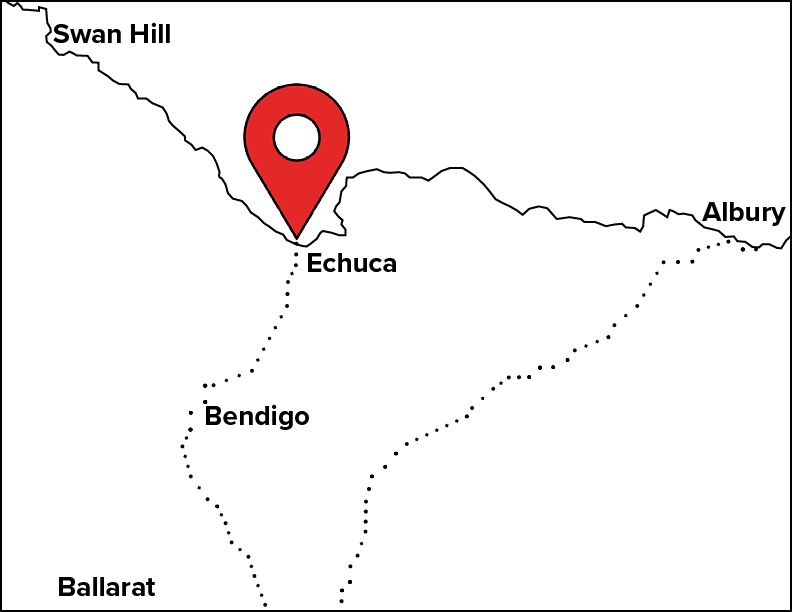Consensus informs strategic step change

Kate Burke, managing director and farm business strategist with the Echuca-based consultancy, Think Agri, says ‘data consensus’ is fundamental to the core principles of strategy. She advocates for lifting crop productivity and profitability.
Dr Burke, who has 29 years of grains industry experience, including 12 years agronomy consulting in the Wimmera and Mallee regions, says data consensus is gleaned from an increasingly sophisticated suite of seasonal and climate risk management tools.
It is then used to inform the critical thinking and decision-making processes at each stage of the strategy she recommends, to help growers optimise farm business management.
Her strategy comprises three main steps:
- Assessment of the farm business’s position at a particular point in time — relative to historical records, spanning seasonal, climatic and on-farm data – to provide a comparative benchmark.
- Consideration of three ‘possible futures’ for the farm business, including estimates of yield potential for all three situations, such as below average, average and above average rainfall. Appraisal of the likelihood of these possible futures based on historical records, as well as up-to-date on-farm data and short and long-term forecasts.
- Identification of management options for the three possible futures, and consideration of their implications — financially and logistically — as part of an overall action plan.
 Dr Burke advises farm business operators to repeat this staged approach, at least monthly, and before making major management decisions — drawing on data trends or patterns that emerge from analysing a range of seasonal and climate risk management tools.
Dr Burke advises farm business operators to repeat this staged approach, at least monthly, and before making major management decisions — drawing on data trends or patterns that emerge from analysing a range of seasonal and climate risk management tools.
'Consensus or agreement in the data obtained from a variety of sources is more persuasive than data from a single source,' Dr Burke says.
She looks to the subscription-based seasonal forecast commentary, The Break, and seasonal forecast summary newsletters, comparing a range of predictive models, released by Agriculture Victoria.
Her toolkit also contains deep soil moisture probe data and commentary released by Agriculture Victoria who manage a Victoria-wide network of probes on growers’ properties.
The Bureau of Meteorology (BOM) is another trusted source of data, with its local and state seasonal forecasts, Indian Ocean Dipole monitoring, and Australian weather watch radar and wind forecasts.
Plus, she suggests growers examine the findings of on-farm soil core sampling and web-based decision support tools, such as Yield Prophet® to estimate crop yield potential based on predicted rainfall and soil testing. Dr Burke also refers to analytical, modelling and simulation tools, such as the CliMate decision-making aid, the French-Schultz model and the Agricultural Production Systems sIMulator (APSIM).
'The beauty of the Agriculture Victoria tools is that they provide a ‘form guide’ of data from different sources that allow growers to see whether there is consensus in the seasonal and climate forecasts at a glance,' she says.
'Data from the on-farm network of deep soil moisture probes is also useful in helping to gauge crop yield potential based on the soil moisture profile across different cropping areas.'
'Together, these tools can assist growers to play the season on its merits.'
2016 example
She says the 2016 season, for example, highlighted the improved crop productivity and profitability that can be achieved where growers used a variety of tools to better estimate yield potential.
'In that season, some growers in northern Victoria underestimated their dryland wheat yield potential at about four tonnes per hectare, mostly based on gut feel and average figures.
'But growers who used a range of tools, such as seasonal and climate outlooks and deep soil moisture data, to more accurately estimate yield potential at up to nine tonnes per hectare were able to better match their inputs to this yield potential.
'Budgeting for that higher yield potential, saw some growers spend an extra $150 per hectare on urea to feed the crop, which in many cases, saw them harvest an extra 5t/ha, returning about $1000 per hectare in extra income.”
Of the many tools she uses, Dr Burke says BOM forecasts, particularly Indian Ocean Dipole (IOD) and El Niño–Southern Oscillation (ENSO) climate indicators, distributed by Agriculture Victoria, have a significant influence on critical thinking as part of crop management.
More specifically, indicators suggesting a positive IOD phase and an El Niño phase, which tend to result in below average rainfall and warmer than average temperatures across southern Australia, may provide a trigger for reducing a farm’s canola cropping area.
Predictions for positive IOD and El Niño phases, associated with dry, warm conditions, might also see growers plan to cut crops for hay instead of harvesting them for grain, she says.
Whereas forecasts suggesting a negative IOD phase and a La Niña phase, indicative of above average winter and spring rainfall, and colder than average temperatures, might prompt southern growers to consider applying more nitrogen to feed higher crop yield potential.
'Under these conditions, growers may also think about reducing the farm’s cereal hay area,' she says. 'Wet springs usually cause hay quality issues and the abundance of pasture hay in wet conditions tends to reduce cereal hay prices.'
However, Dr Burke emphasises the importance of assessing these climate predictions against the backdrop of a suite of risk management tools to provide an overarching perspective of the season, geared to better inform a strategic approach to farm business management.